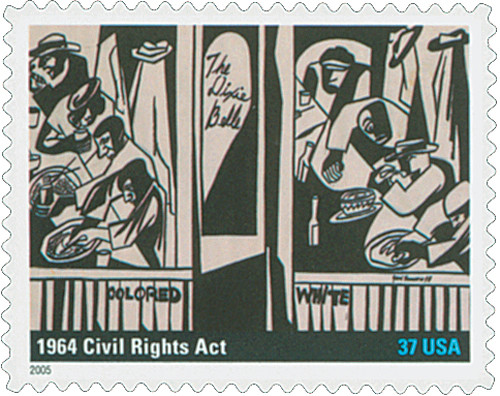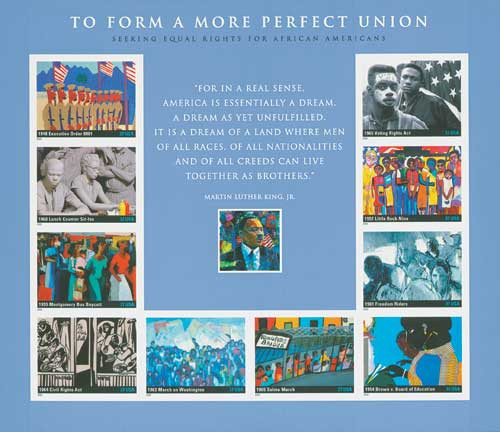
# 3937b - 2005 37c To Form a More Perfect Union: Voting Rights Act
37¢ 1965 Voting Rights Act
To Form a More Perfect Union
City: Washington, DC
Printing Method: Lithographed
Color: Multicolored
Voting Rights Act Of 1965
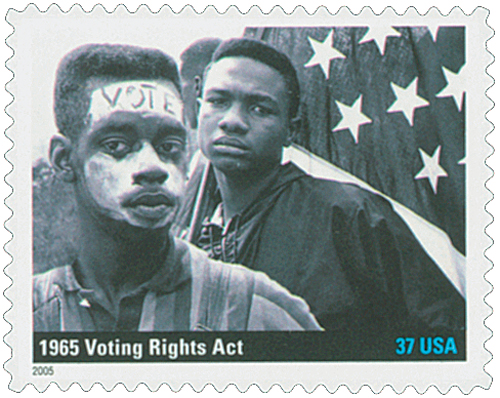
On August 6, 1965, President Lyndon B. Johnson signed the Voting Rights Act into law, prohibiting racial discrimination in voting.
The 15th and 19th Amendments to the United States Constitution granted black citizens the right to vote. However, Southern registration boards used poll taxes, literacy tests, and other strategies to deny this right.
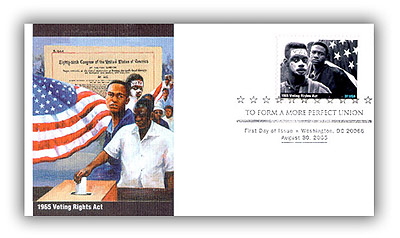
The first major progress came in 1957 when Congress passed the first civil rights legislation since Reconstruction, the Civil Rights Act of 1957. It permitted the Attorney General to sue for people whose 15thAmendment rights were denied and created the Civil Rights Division in the Department of Justice as well as the Commission on Civil Rights. There was also the Civil Rights Act of 1960, which pushed for increased voter registration in areas where voting discrimination had been known.
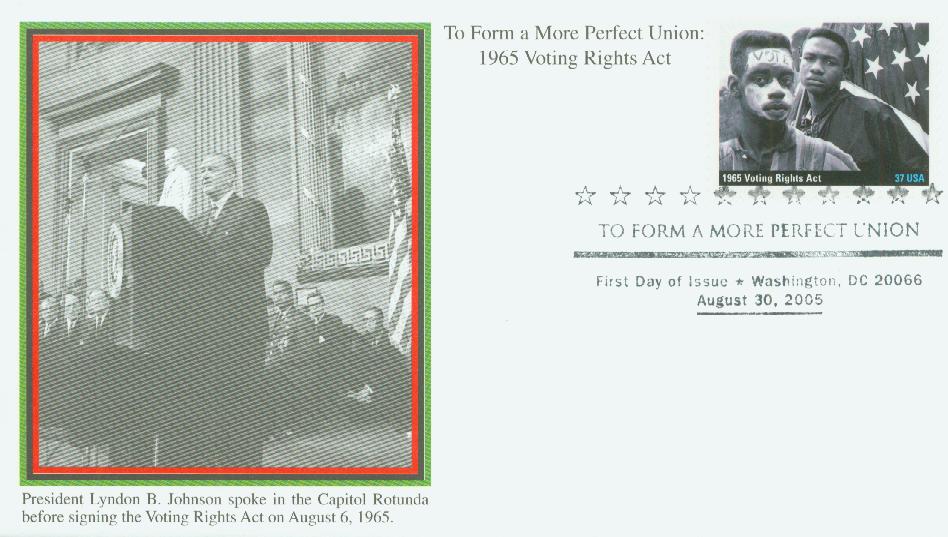
Additionally, the Civil Rights Act of 1964 provided some voting rights protections, including a requirement that literacy tests be distributed equally. In spite of all these attempts, voting discrimination still persisted. Shortly after the 1964 elections, President Lyndon B. Johnson told his Attorney General to draft the “toughest voting rights act” he could.
In the meantime, the murder of voting-rights activists in Mississippi in 1964 brought national attention to the issue. Then, on Sunday, March 7, 1965, Selma, Alabama, residents and supporters marched to demand an equal right to vote. Alabama police used tear gas and clubs against them.

President Johnson denounced “Bloody Sunday,” and said “Wednesday I will send to Congress a law designed to eliminate illegal barriers to the right to vote… It is wrong – deadly wrong – to deny any of your fellow Americans the right to vote in this country.”
The voting rights bill Johnson sent to Congress removed the right of states to restrict who could vote in elections. The Act was passed by large majorities in both houses of Congress and signed into law on August 6, 1965.
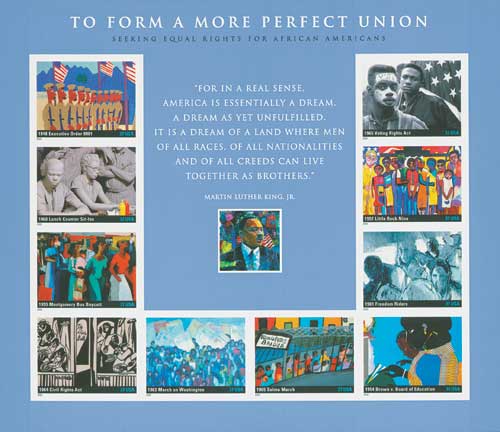
Within months of its passage, a quarter of a million new black voters had registered. Within four years, voter registration in the South had more than doubled. In 1965, barely 100 African-Americans held any elective office in the US; by 1989, there were more than 7,200. The Voting Rights Act of 1965 accomplished its purpose.
Click here to read the Voting Rights Act of 1965.
37¢ 1965 Voting Rights Act
To Form a More Perfect Union
City: Washington, DC
Printing Method: Lithographed
Color: Multicolored
Voting Rights Act Of 1965

On August 6, 1965, President Lyndon B. Johnson signed the Voting Rights Act into law, prohibiting racial discrimination in voting.
The 15th and 19th Amendments to the United States Constitution granted black citizens the right to vote. However, Southern registration boards used poll taxes, literacy tests, and other strategies to deny this right.

The first major progress came in 1957 when Congress passed the first civil rights legislation since Reconstruction, the Civil Rights Act of 1957. It permitted the Attorney General to sue for people whose 15thAmendment rights were denied and created the Civil Rights Division in the Department of Justice as well as the Commission on Civil Rights. There was also the Civil Rights Act of 1960, which pushed for increased voter registration in areas where voting discrimination had been known.

Additionally, the Civil Rights Act of 1964 provided some voting rights protections, including a requirement that literacy tests be distributed equally. In spite of all these attempts, voting discrimination still persisted. Shortly after the 1964 elections, President Lyndon B. Johnson told his Attorney General to draft the “toughest voting rights act” he could.
In the meantime, the murder of voting-rights activists in Mississippi in 1964 brought national attention to the issue. Then, on Sunday, March 7, 1965, Selma, Alabama, residents and supporters marched to demand an equal right to vote. Alabama police used tear gas and clubs against them.

President Johnson denounced “Bloody Sunday,” and said “Wednesday I will send to Congress a law designed to eliminate illegal barriers to the right to vote… It is wrong – deadly wrong – to deny any of your fellow Americans the right to vote in this country.”
The voting rights bill Johnson sent to Congress removed the right of states to restrict who could vote in elections. The Act was passed by large majorities in both houses of Congress and signed into law on August 6, 1965.

Within months of its passage, a quarter of a million new black voters had registered. Within four years, voter registration in the South had more than doubled. In 1965, barely 100 African-Americans held any elective office in the US; by 1989, there were more than 7,200. The Voting Rights Act of 1965 accomplished its purpose.
Click here to read the Voting Rights Act of 1965.







